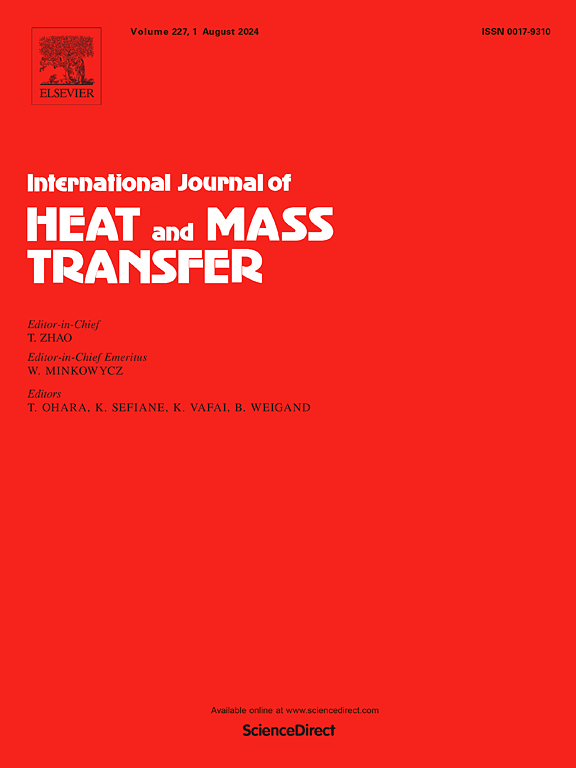Molecular dynamics study on thermal properties of nanofluids enhanced by interfacial molecular orientation
IF 5
2区 工程技术
Q1 ENGINEERING, MECHANICAL
International Journal of Heat and Mass Transfer
Pub Date : 2025-02-12
DOI:10.1016/j.ijheatmasstransfer.2025.126791
引用次数: 0
Abstract
Nanofluids have a wide range of applications due to its excellent thermal properties (density, thermal conductivity and heat capacity), however, the mechanisms of thermal properties enhancement for nanofluids are still debatable. In this work, the study is focused on the effects of temperature, particle concentration and surface property (hydroxylated silica or hydrogenated silica) on the thermal properties of silica/1,8-octanediol (ODL) nanofluid using the molecular dynamics (MD) simulations. It reveals that the different molecular orientation of interfacial layers formed by 1,8-ODL on the silica surface cause the differences in its thermal properties: the nanofluid with hydroxylated silica possesses a higher density and a higher thermal conductivity, while the nanofluid with hydrogenated silica possesses a higher heat capacity. Moreover, the effects of temperature and particle concentration are also investigated in this study. As the temperature increases, the thermal conductivity enhancement changes nonmonotonically and presents a maximum, which results from the combination of the limited diffusion of 1,8-ODL molecules and the adsorption-desorption of molecules in the interfacial layer. The heat capacity enhancement of nanofluids increases with temperature can be attributed to the elevated interfacial thermal resistance between 1,8-ODL and silica. With a low silica concentration, the heat capacity of nanofluids can exceed that of pure 1,8-ODL due to the existence of interfacial layer. The findings in this work emphasize the important role of interfacial layer and molecular diffusion characteristics in enhancing the thermal properties of nanofluids.
求助全文
约1分钟内获得全文
求助全文
来源期刊
CiteScore
10.30
自引率
13.50%
发文量
1319
审稿时长
41 days
期刊介绍:
International Journal of Heat and Mass Transfer is the vehicle for the exchange of basic ideas in heat and mass transfer between research workers and engineers throughout the world. It focuses on both analytical and experimental research, with an emphasis on contributions which increase the basic understanding of transfer processes and their application to engineering problems.
Topics include:
-New methods of measuring and/or correlating transport-property data
-Energy engineering
-Environmental applications of heat and/or mass transfer

 求助内容:
求助内容: 应助结果提醒方式:
应助结果提醒方式:


